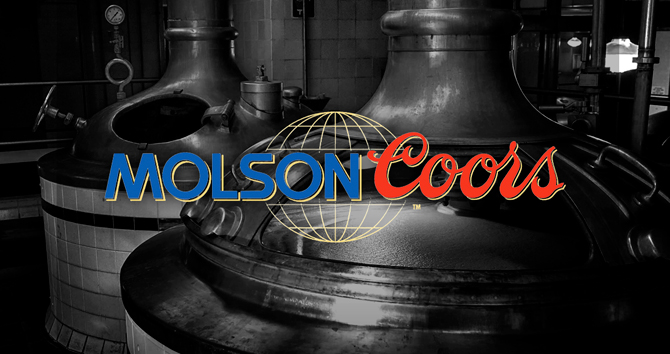
Despite continued negative domestic volume trends for its flagship light lager brands, Molson Coors’ worldwide sales increased 0.2 percent to more than $11 billion in 2017, according to company earnings released today.
In 2017, Molson Coors’ global brand volumes increased 1 percent while its revenues per hectoliter were up 2.6 percent, which the company credited to “revenue management and portfolio premiumization.”
The company also shared fourth-quarter highlights, including a 4.5 percent increase in global net sales to about $2.6 billion and a 5.8 percent increase in revenues per hectoliter. However, global brand volumes decreased 1.1 percent during the quarter.
Molson Coors’ full-year domestic sales to wholesalers (STWs) declined 3.3 percent compared to 2016. Sales to retailers (STRs) were down 2.9 percent, which the company attributed to lower volumes in the premium light and below premium segments.
Meanwhile, for the three months ending December 31, the company’s STWs declined by 1.5 percent while its STRs declined 3 percent.
In a press release, Molson Coors president and CEO Mark Hunter said the company was able to deliver “financial and commercial results” despite “a backdrop of integration and challenging market conditions during 2017.” He added that the company “over-delivered on cost savings and free cash flow” and “strengthened” its balance sheet by more than $900 million via “debt pay-down and pension contributions as part of our deleverage strategy.”
Molson Coors also reported more than $255 million in cost savings in 2017. The company is also projecting about $200 million in benefits this year due to the recently passed U.S. tax code reform, Molson Coors global chief financial officer Tracey Joubert said. The company is projecting hundreds of millions of dollar in tax benefits over the next 13 years due to the changes in the tax rate.

During a call with investors and analysts, Hunter said the company’s above premium portfolio of brands now accounts for 20 percent of the company’s total brand volumes, up 2 percent from the previous year. He added that above premium volumes increased 21 percent for the year and 6 percent in Q4.
Blue Moon grew in every quarter of 2017, while the Leinenkugel’s brand grew in the low-single digits as core offering Summer Shandy had its best year of all time, Joubert said.
MillerCoors CEO Gavin Hattersley said the company’s four craft brands (Saint Archer, Revolver, Hop Valley and Terrapin) and Peroni also grew in 2017. He added that the company’s economy brands had their “best performance in eight years,” driven by Keystone Light.
Speaking of Keystone, there was no mention on the call of Stone Brewing’s recently filed lawsuit against the company’s U.S. subsidiary, MillerCoors, alleging that the rebrand of its Keystone brand infringed upon the San Diego craft brewery’s “Stone” trademarks.
Looking ahead, Hunter said the company would work to “strengthen and premiumize” its brand portfolio. He laid out a plan that includes growing share for flagship brands such as Coors Light and Miller Lite, refreshing Coors Light’s branding, and accelerating growth of its above premium and craft offerings.
Hattersley added that the company plans to stabilize its below premium brands and introduce innovation initiatives, including the launch of Sol in April, the release of Arnold Palmer Spiked and the introduction of fruit-flavored light lager brand Two Hats to capture new legal-drinking-age consumers.
Asked about potentially creating a competitor to “fitness beers” such as Michelob Ultra, Hunter said the company would instead focus on Coors Light, Henry’s Hard Sparkling and Miller Lite, which he called “the original fitness beer.”